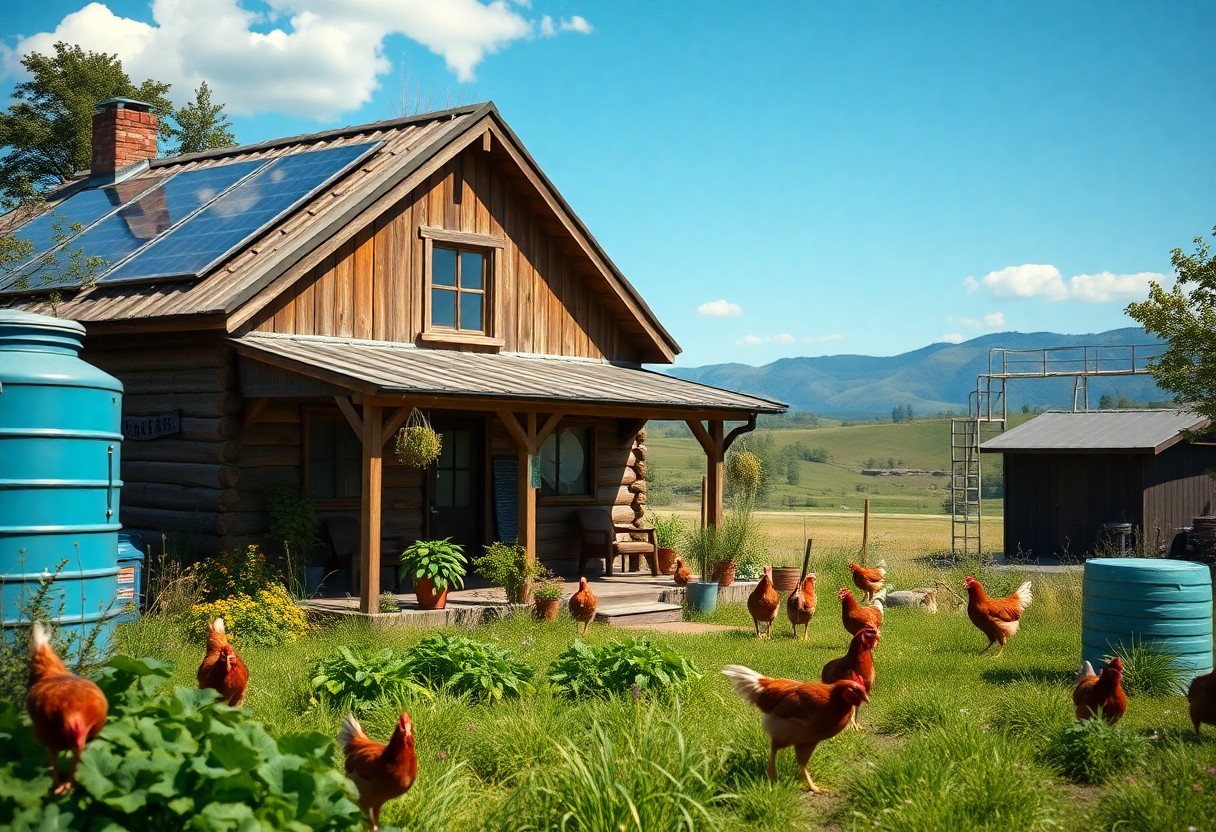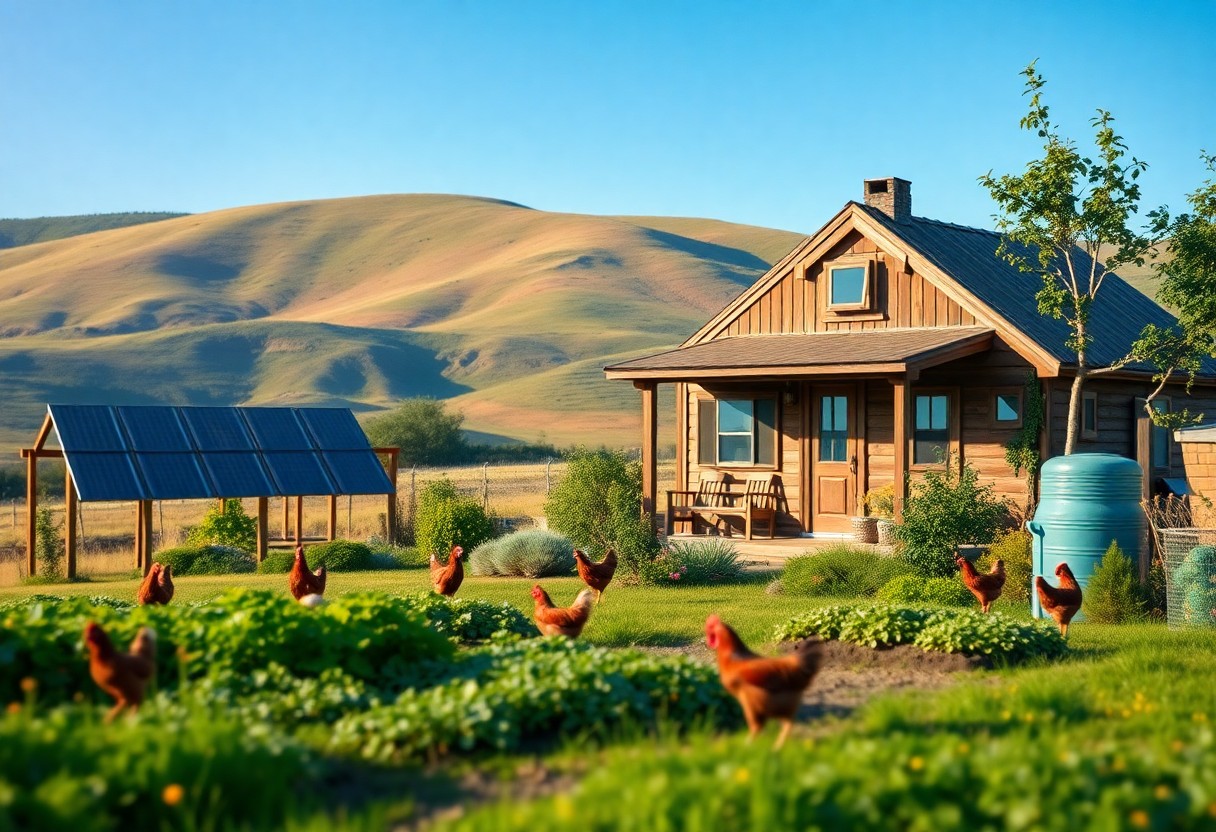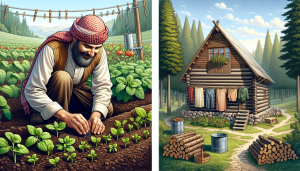With the increasing desire for independence and sustainability, you have the opportunity to look into the rewarding journey of creating your own self-sufficient homestead from scratch. This lifestyle not only reduces your reliance on external resources but also fosters a deep connection with nature. By focusing on imperative skills like gardening, animal husbandry, and renewable energy, you can transform your living space into a thriving sanctuary. Throughout this blog post, you will uncover practical tips and strategies to navigate the challenges and embrace the positive aspects of off-grid living.
Key Takeaways:
- Self-Sufficiency: Building a homestead allows individuals to be less reliant on external resources, promoting sustainability and independence.
- Resource Management: Effective management of water, energy, and food sources is crucial for a thriving off-grid lifestyle.
- Community and Skills: Connecting with like-minded individuals and developing practical skills enhances the experience and success of off-grid living.
Assessing Your Off-Grid Vision
For anyone looking to create a self-sufficient homestead, assessing your off-grid vision is a vital first step. This phase requires you to envision the lifestyle and environment you aspire to cultivate. Consider your motivations, such as a desire for independence, a sustainable lifestyle, or simply a closer connection to nature. Clarity in your vision will guide your decisions on land, resources, and techniques as you initiate on this transformative journey.
Defining Self-Sufficiency
Before you investigate your off-grid journey, it’s important to define what self-sufficiency means to you. This could involve growing your own food, producing energy, and crafting goods to minimize reliance on external systems. Understanding your unique take on self-sufficiency will shape the strategies you implement and help you prioritize different elements of your homestead.
Identifying Your Goals and Needs
Along your path to creating an off-grid homestead, identifying your goals and needs is important. This process ensures you develop a tailored approach that aligns with your vision and lifestyle. Your goals may range from achieving complete energy independence to cultivating a thriving garden or establishing a community network. By pinpointing these specifics, you can make informed choices that enhance your self-sufficiency journey and effectively utilize your resources.
Also, take into account the practical aspects of your self-sufficient homestead. Assess your available resources, such as land, water, and materials, and determine how these will support your goals. Consider your skills and areas where you may need to learn more, whether it’s gardening, building, or alternative energy systems. Additionally, explore potential challenges, like climate conditions or wildlife, which could impact your plans. Having a clear understanding of your needs not only boosts your confidence but also significantly increases your chances of long-term success.
Choosing the Right Location
Some key factors play a significant role in selecting an ideal location for your self-sufficient homestead. It’s necessary to consider accessibility, proximity to resources, and the overall landscape. A well-chosen site not only enhances your homesteading experience but can also influence your long-term sustainability and success.
Land Considerations
Across your search for the perfect land, prioritize aspects like soil quality, drainage, and existing vegetation. Evaluate the availability of clean water sources and the overall topography. A flat, fertile parcel is often ideal for crop production, while higher elevations may provide better drainage and views.
Climate and Environment
Environment plays a vital role in determining what crops can thrive and how your animals will adapt to their surroundings. Understanding your area’s growing seasons, rainfall, and temperature ranges will help you to develop a productive and sustainable homestead.
Right climate conditions can significantly affect your homesteading success. Favorable temperatures and adequate precipitation will enable you to grow a diverse range of crops, while extreme weather events such as droughts or floods can challenge your efforts. You should assess the potential environmental risks, such as pests and diseases, alongside opportunities like natural resources available on your land to ensure seamless homesteading.
Designing Your Homestead
To create a successful off-grid homestead, you must give careful thought to its overall design. This involves assessing your land’s natural features and resources, as well as determining which structures and systems best suit your lifestyle. Planning for long-term functionality will enable you to maximize productivity and minimize waste, ensuring that your homestead thrives.
Layout and Functionality
Designing your homestead layout involves organizing your space to enhance efficiency and create a harmonious living environment. Consider zones for gardening, livestock, and living quarters, ensuring easy access between areas. Implementing a well-planned layout not only promotes productivity but also nurtures a connection to nature, allowing you to enjoy the beauty of your surroundings.
Sustainable Building Techniques
Among the various aspects of building your homestead, incorporating sustainable techniques can significantly reduce your environmental impact. Utilizing local materials, such as reclaimed wood or stone, not only enhances the aesthetic appeal of your structures but also minimizes transportation emissions. Techniques like passive solar design, straw bale insulation, and earthbag construction help maintain comfortable indoor temperatures while using fewer resources, creating an efficient and eco-friendly homestead.
Layout and positioning of your buildings also play an integral role in promoting sustainability. For effective passive heating and cooling, orient your home to capitalize on sunlight while providing adequate shading in warmer months. Incorporating rainwater harvesting systems and greywater recycling not only conserves precious water resources but also reinforces your self-sufficiency goals. By meticulously planning your homestead’s design and employing these sustainable building techniques, you create a resilient home that aligns with your values and promotes a thriving off-grid lifestyle.
Water and Waste Management
Unlike conventional living situations, managing water and waste off-grid requires a proactive and sustainable approach. You’ll need to create systems that efficiently handle both clean water sourcing and waste disposal, ensuring your homestead functions smoothly while preserving the environment. Adapting these practices will not only aid in your self-sufficiency journey but will also promote a healthier ecosystem around you.
Sourcing Clean Water
Against the backdrop of off-grid living, finding a sustainable source of clean water is crucial. Rainwater harvesting systems, wells, or nearby streams may serve as your primary water supply. Ensure that you have proper filtration and purification methods in place to protect your health and maintain quality.
Composting and Waste Disposal
Along with sourcing clean water, managing waste responsibly is vital for maintaining your homestead’s sustainability and hygiene. Implementing a composting system not only reduces your waste but also enriches your soil, promoting growth in your gardens.
In fact, composting organic waste is an effective method for recycling nutrients back into your soil, creating a natural fertilizer for your crops. You’ll not only reduce the volume of waste but also prevent harmful pathogens from polluting your land. For non-organic waste, consider setting up designated disposal areas or using methods such as burning safely to minimize environmental impact. This thoughtful approach ensures that your homestead remains clean while also contributing to the health of your ecosystem.
Energy Generation
Not all energy sources are created equal, especially when you are striving for self-sufficiency in your off-grid lifestyle. Whether you opt for solar, wind, or hydro, understanding how each system integrates with your homestead is key to achieving reliable energy generation while respecting the environment around you. Discovering the balance between your energy needs and the systems you implement will pave the way for a truly sustainable lifestyle.
Renewable Energy Options
Against the backdrop of climate change, renewable energy options offer not only sustainability but also independence from traditional power grids. Embracing technologies like solar panels, wind turbines, or micro-hydro systems allows you to harness natural resources in your locale, minimizing your carbon footprint and reliance on fossil fuels.
Storage and Efficiency
After generating energy, it’s imperative to focus on how you store and use that energy efficiently. This involves selecting batteries that can handle your energy demands and adopting energy-efficient appliances that reduce overall consumption.
In addition to storage systems, creating a comprehensive energy plan ensures that you can optimize your energy generation and usage. Utilizing deep cycle batteries ensures you have sufficient backup for periods of low generation while also prolonging the lifespan of your investment. To enhance efficiency further, consider implementing energy-saving techniques in your daily routines, such as using LED lighting and energy-efficient appliances. This not only maximizes your resources but also contributes to a lower environmental impact over time.

Growing Your Own Food
Now is the perfect time to start growing your own food, providing you with a rewarding way to become self-sufficient. You can cultivate a variety of vegetables, fruits, and herbs right at home, ensuring that your meals are fresh and nutritious. By planning your garden effectively and understanding seasonal cycles, you’ll create a bountiful harvest that sustains your off-grid lifestyle.
Gardening Basics
Basics of gardening involve understanding your soil, climate, and the needs of various plants. Start with soil testing to determine nutrient levels and pH, and choose plants that thrive in your specific environment. Create a layout that maximizes space and sunlight while considering companion planting to improve yields. Regular maintenance, such as watering and weeding, is vital to a flourishing garden.
Permaculture Principles
Between permaculture principles and traditional gardening techniques, you can foster a sustainable, self-sufficient food system. Permaculture emphasizes harmony with nature, using ethical practices to create ecosystems that support both plant and animal life.
The principles of permaculture encourage you to work with natural patterns, enhancing biodiversity and reducing waste. Focus on designing efficient systems where everything has a purpose, promoting soil health through composting and rotating crops. Incorporating elements like rainwater harvesting and companion planting can lead to a more resilient garden. By applying these holistic approaches, you’ll not only increase productivity but also create a balanced and thriving environment where your self-sufficient homestead can flourish.
Livestock and Permaculture
Despite the challenges that may arise, integrating livestock into your permaculture design can significantly enhance the sustainability and productivity of your homestead. Animals not only provide valuable resources such as meat, eggs, and milk but also contribute to soil fertility and pest control. By carefully selecting and managing your livestock, you can create a harmonious system that benefits both your farm and the local ecosystem.
Choosing the Right Animals
Above all, it’s important to select animals that align with your climate, available space, and dietary needs. Considerations such as space requirements, feeding habits, and waste management can influence your choice. From compact chickens to larger goats, choose livestock that complements your landscape and supports your goals for self-sufficiency.
Integrating Animals into Your System
Your approach to integrating animals should be strategic to maximize their benefits while minimizing potential issues. By understanding how different species interact with plants and their surroundings, you can create a balanced ecosystem. For example, using chickens for pest control and manure production or goats for clearing brush can improve your land’s health while supplying you with food.
It’s crucial to monitor how your animals interact with the environment to create a thriving ecosystem. Introduce animals gradually and observe their behaviors, ensuring they don’t overgraze or disrupt your plants. Additionally, consider rotational grazing to enhance soil health and boost forage regeneration. By designing your system thoughtfully, you’ll harness the positive effects of livestock, leading to a more productive and resilient homestead.
FAQ
Q: What are the first steps to take when starting an off-grid homestead?
A: The initial steps involve choosing a suitable location with access to resources such as water, sunlight, and fertile land. Research local zoning laws and regulations to ensure your plans are compliant. It’s important to create a detailed plan outlining your goals, budget, and the type of sustainable systems you wish to implement. Start small by developing basic shelter and gradually expand to include food production, renewable energy solutions, and waste management systems.
Q: How do I ensure a sustainable water supply for my homestead?
A: Establishing a dependable water supply can be achieved through various methods such as drilling a well, collecting rainwater, or using a nearby natural water body. If you decide to collect rainwater, ensure you have proper storage tanks and filtration systems in place. It’s also advisable to seek advice from local professionals to understand the best options for your specific region, including water rights and conservation techniques.
Q: What renewable energy options are best for an off-grid homestead?
A: Common renewable energy sources for off-grid living include solar panels, wind turbines, and micro-hydraulic systems. The choice depends on your geographical location, budget, and energy needs. Solar panels are often the most accessible and can be installed in a variety of settings. Wind turbines can be effective in areas with consistent wind. A combination of these technologies may provide the most reliable power supply. An energy audit can help determine your consumption and assist in selecting the right systems for your homestead.
Q: How do I go about growing my own food efficiently on an off-grid homestead?
A: Start by assessing your soil quality and preparing it for planting. Consider implementing raised beds or container gardening if soil quality is poor. Research which crops grow well in your climate and plan for a diverse range of species to maximize yield. Utilize permaculture principles, such as companion planting and crop rotation, to maintain soil fertility and reduce pest issues. Incorporating a greenhouse can extend your growing season. Lastly, preservation techniques like canning and dehydration can help keep your food supply stable throughout the year.
Q: What are some best practices for waste management in an off-grid homestead?
A: Effective waste management starts with reducing waste at the source. Composting organic waste can turn kitchen scraps into valuable fertilizer for your garden. Additionally, installing a greywater system can recycle water from sinks and showers for irrigation. When dealing with human waste, consider building a composting toilet or a traditional outhouse, making sure to follow local guidelines for sanitation. Familiarizing yourself with local recycling and disposal options can also benefit your off-grid lifestyle and keep your homestead clean and organized.


